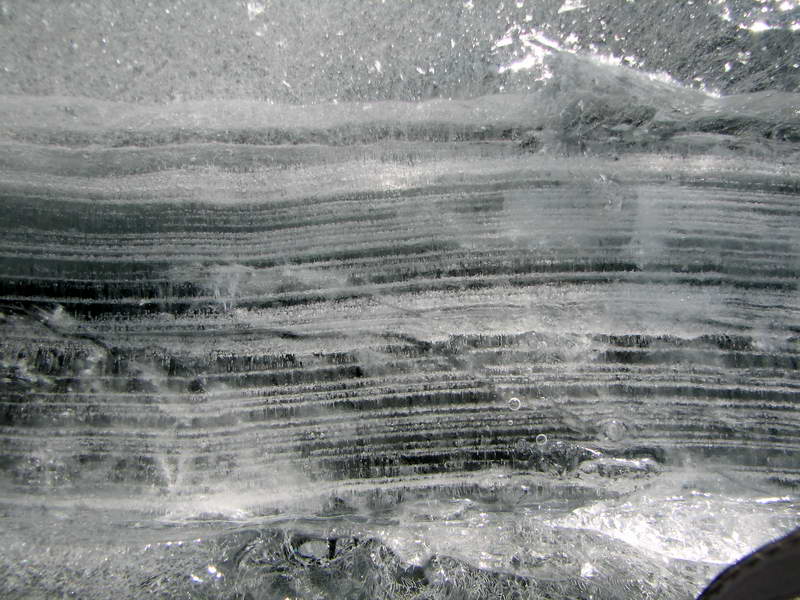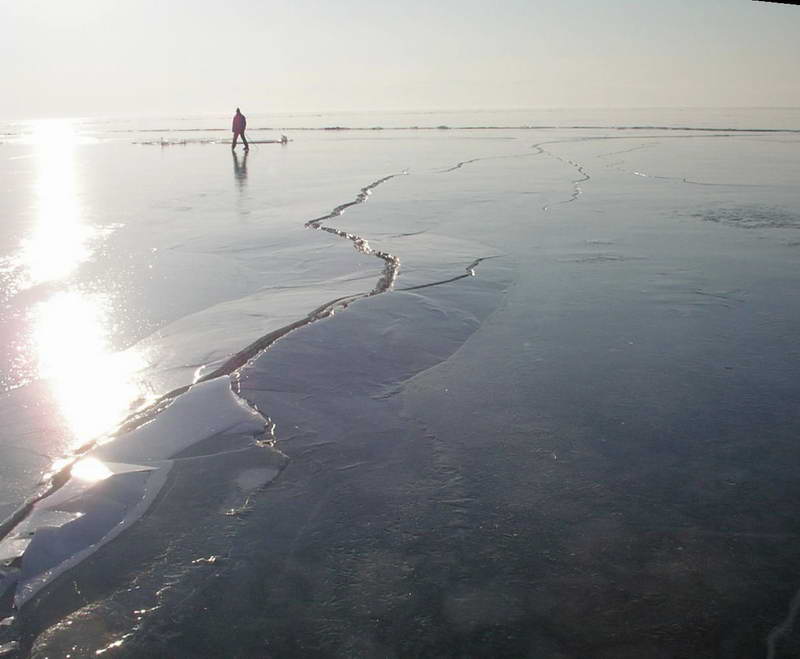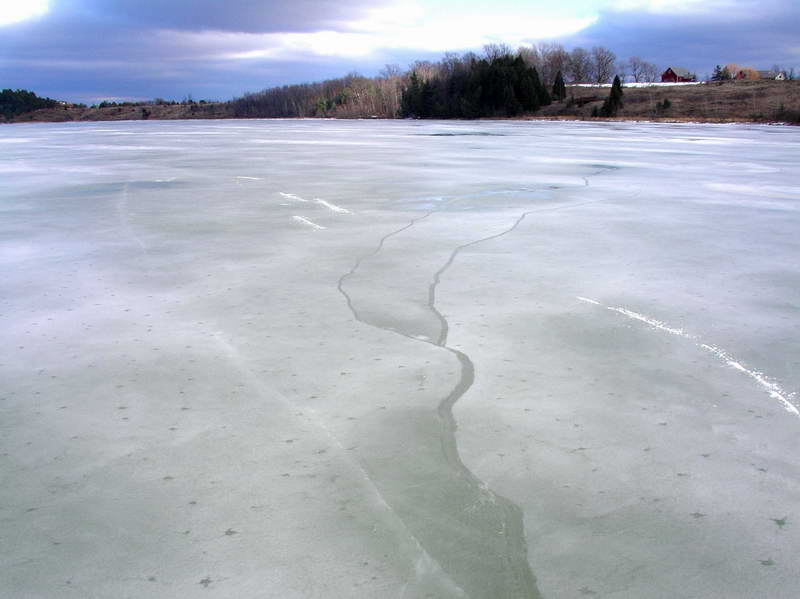Tectonic Cracks
A roughly 12" wide tectonic crack
Tectonic cracks are commonly associated with overlapped pressure ridges. They are called 'active cracks' in Sweden. Whenever an overlapped ridge terminates in the middle of an ice sheet there is a tectonic crack continuing onward. They also occur by themselves. The have a characteristic irregularity about their shape. If they are refrozen there are usually several white freeze lines from previous openings. They are one form of wet cracks .
 3" tectonic crack with many refreeze lines. Picture taken in mid March.
3" tectonic crack with many refreeze lines. Picture taken in mid March.
They range in width from an inch to over a foot. Often they are reasonably easy to see from a moderate distance but sometimes they are not. For example if there is no wind or snow on the ice they can be hard to see. They are a hazard to iceboaters for catching runners and, possibly, causing a crash. They can be a problem for skaters if the skate is alligned with the crack or they are large.
Techtonic cracks larger than about a foot are considered a lead which are often several feet or more.
These cracks can freeze leaving a shallow wide groove in the ice. If the weather is moderate they might simply not freeze. Or they can freeze a thin cover at the top of the water in the crack. In particular this is common with Spring Techtonic Cracks. In colder weather with blowing snow they will will form slush bands over over the cracks with water being wicked into the snow.
Large snow bands form over larger wet cracks. With time and cold temperatures the bands generally get hard enough to skate over....but if they are have a thin snow layer over the crack a skate or runner can drop through. For skaters it is generally it is better to skate around snow bands or walk across the bands at a right angle to the crack axis. If a slush band has a fully frozen top layer with a layer of unfrozen slush underneath they can be a tripping hazard for skaters.
 Tectonic crack wiith some buckling of the ice sheet. Burlington Harbor 2005
Tectonic crack wiith some buckling of the ice sheet. Burlington Harbor 2005
In the spring they may take a different character. They take over the role of accommodating the expansion and contraction in the ice sheet (See Spring Tectonic Cracks)
 Frozen tectonic crack. The little dark stars are refrozen small infiltration holes (roughly a foot appart)
Frozen tectonic crack. The little dark stars are refrozen small infiltration holes (roughly a foot appart)
In January 2019 on the inland sea (near South Hero VT) we had a situaiton where the temperatue rose from 0 to 9 degrees with nearly full sun. The wind was light. The ice was about 5" thick. There was a considerable amount of noise coming from the ice through the late morning. Several ridges formed, mostly overlapped with some folded ridges. There were also a few long wet cracks with widths up to a foot. A couple skaters went over a 10" crack with out seeing it until they were on it. Another skater skated onto a loose plate of an overlapped ridge. Another broke through to his waist. Two other people got wet probably after tripping on the edge of a folded ridge.
Winds over the following night blew snow over wet cracks. The wet cracks caught some of the blowing snow and created slush bands that were often several feet wide. On the first day after the wet cracks formed some of the slush bands did not completely cover the wet cracks. They probably remained a tripping risk for a day or three.
All this to say is watch for wide wet cracks around pressure ridges.
